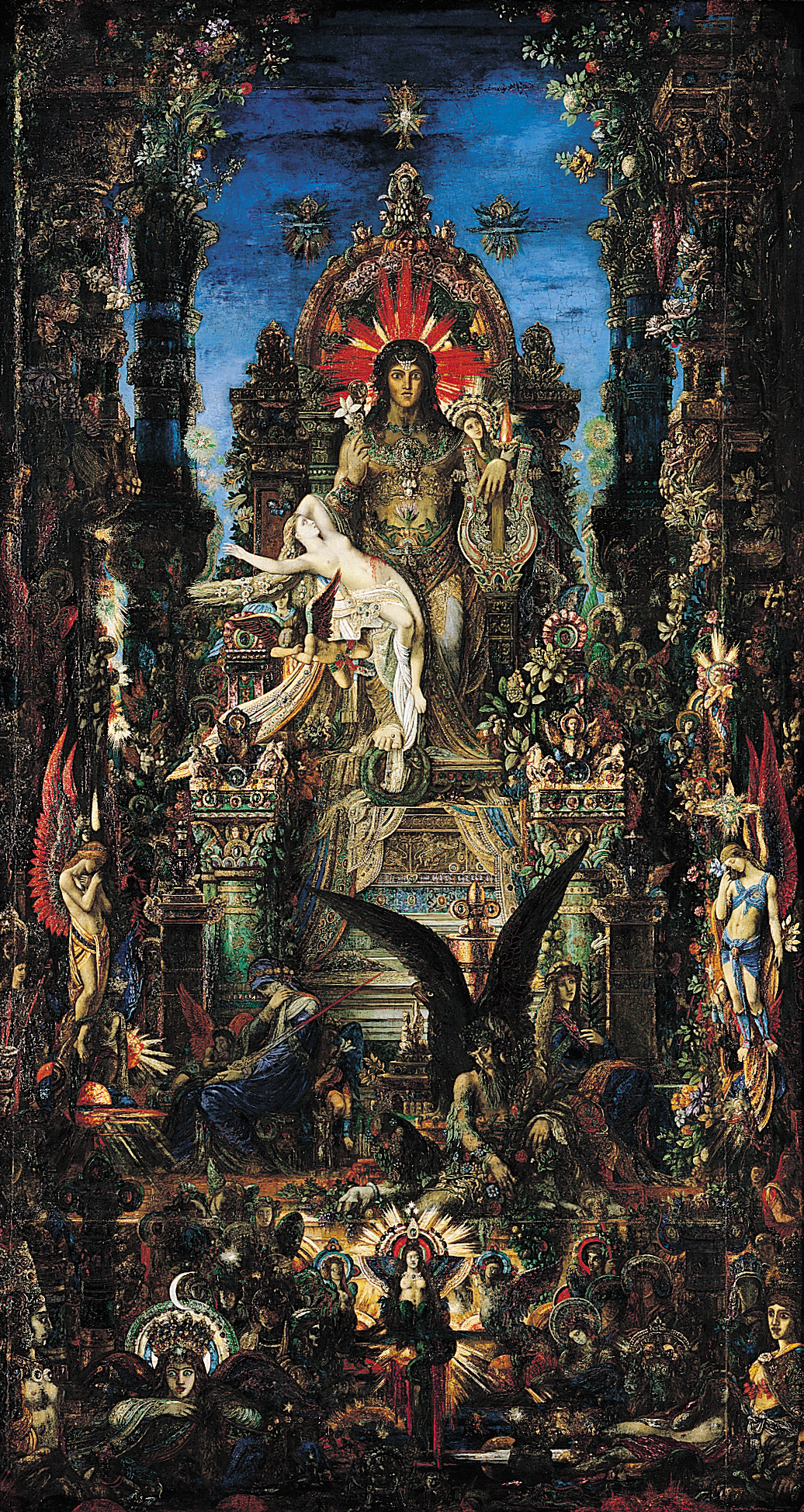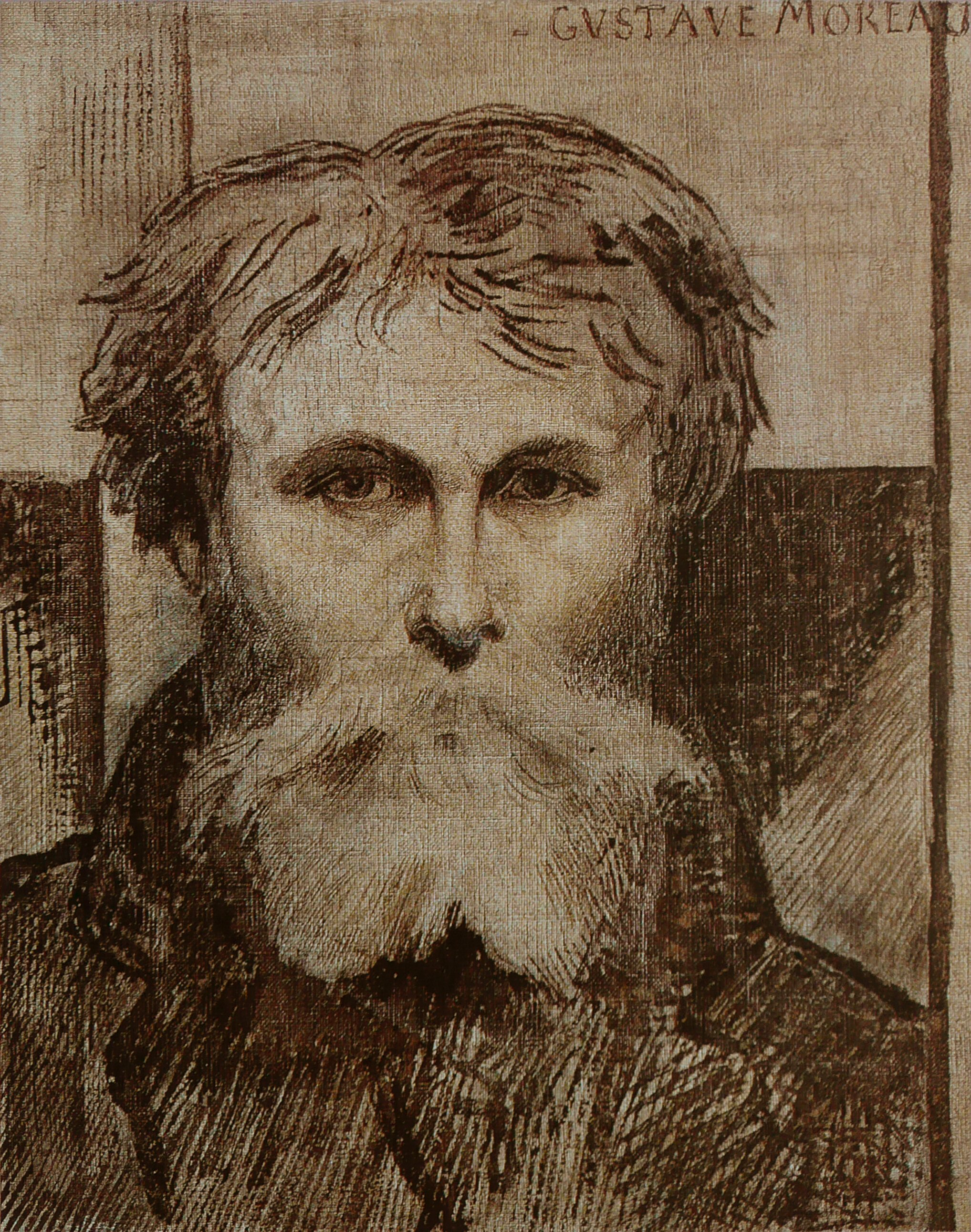Jupiter et Semele is a painting by the French Symbolist Gustave Moreau (1826-1898). It takes from the classical myth of the mortal woman Semele, mother of the god Dionysus, and her lover Jupiter, the king of the gods. Semele was treacherously advised by the goddess Juno, Jupiter’s wife, to ask Jupiter to appear to her in all his divine splendor. Jupiter obliged but, in so doing, brought about her violent death by his divine thunder and lightning. The painting is a representation of “divinized physical love” and the overpowering experience, which is “quite simply the most sumptuous expression imaginable of an orgasm”, that consumes Semele when Jupiter appears in his glory. Of this work, Moreau wrote: “Semele, penetrated by the divine effluence, regenerated and purified by this consecration, dies struck by lightning and with her dies the genius of terrestrial love, the genius with the goat hooves.” Moreau described his canvas: “In the midst of colossal aerial buildings, with neither foundations nor roof-tops, covered with teeming, quivering vegetation, this sacred flora standing out against the dark blues of the starry vaults and the deserts of the sky, the God so often invoked appears in his still veiled splendor.”




Jupiter et Semele
oil on canvas • 213 x 118 cm
 Gustave Moreau
Gustave Moreau